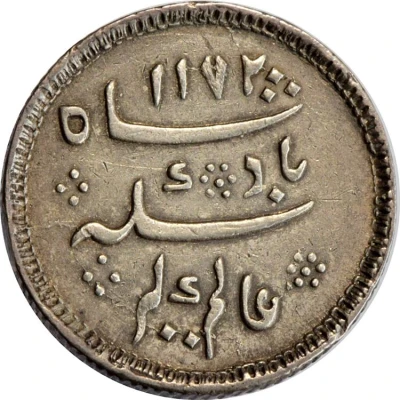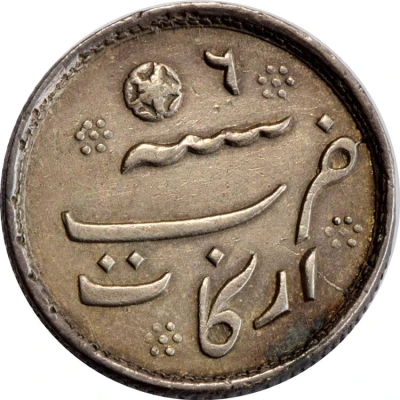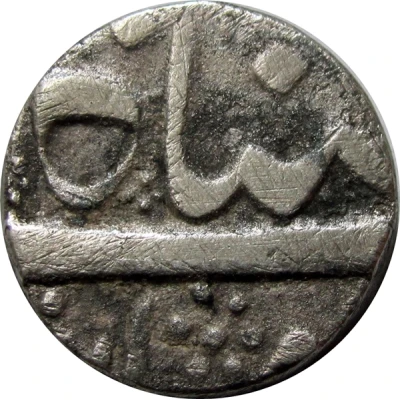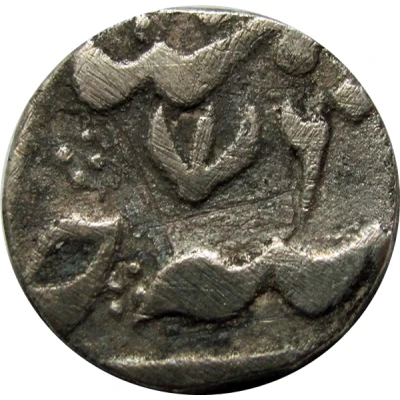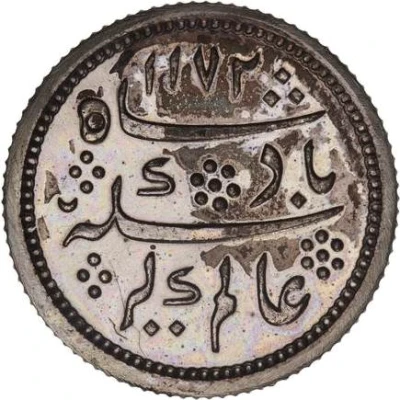
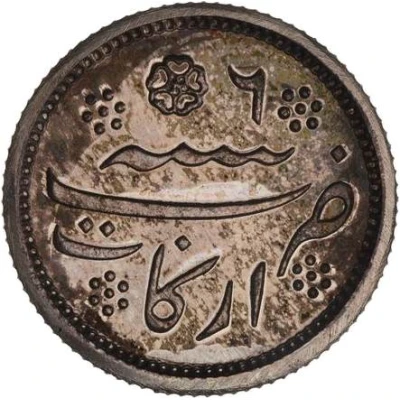

© Museums Victoria
¼ Rupee - Alamgir II
1172 (1830) year| Silver | 2.91 g | 17 mm |
| Issuer | Madras Presidency (British India) |
|---|---|
| Type | Standard circulation coin |
| Year | 1172 (1830) |
| Calendar | Islamic (Hijri) |
| Value | ¼ Rupee |
| Currency | Rupee (1691-1835) |
| Composition | Silver |
| Weight | 2.91 g |
| Diameter | 17 mm |
| Shape | Round |
| Demonetized | Yes |
| Updated | 2024-10-05 |
| Numista | N#127071 |
|---|---|
| Rarity index | 97% |
Reverse
Legend in Persian: Zarb Arcat sanat 6
All within a toothed border
Lettering: ٦
Translation: Struck at Arcot in the (RY) 6th year
Edge
Vertical milled/Reeded (straight grained |||)
Comment
- AH 1172 / RY6 is a frozen date, coins were struck between 1830-35 AD at the Calcutta mint (although mint name on coin is "Arcot") for distribution in the Dacca, Chittagong area- The Madras rupee remained legal tender until 1 June 1878 although its production had ceased in 1835.
- ROSE mint mark on reverse + Crescent privy mark on obverse
Interesting fact
One interesting fact about the ¼ Rupee - Alamgir II 1172 (1830) coin from Madras Presidency (British India) is that it was made of silver, which was a significant change from the previous coins that were made of copper or other metals. This change in material was likely due to the increasing demand for silver coins during the 19th century, as well as the desire to create coins that were more durable and had a higher value. The use of silver in these coins also reflects the growing influence of British rule in India and the introduction of new currency systems during that time.
